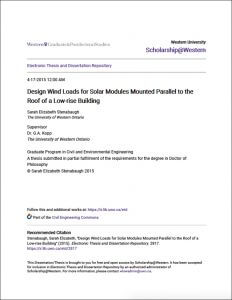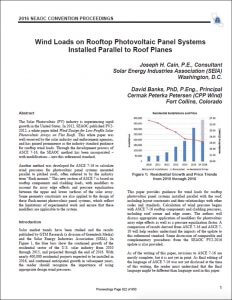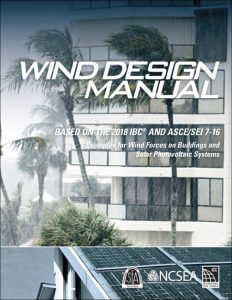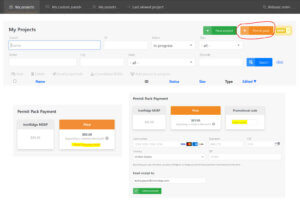ASCE/SEI 7 is a nationally adopted standard for the analysis and design of buildings and other structures. The 2016 edition of this consensus standard (ASCE 7-16) has been adopted into the 2018 International Building Code (IBC 2018). Learn what that means for you and your team.
- Solar now has its own section of code, and is no longer tucked under “Cladding and Components.”
- New wind tunnel testing results have changed wind loads across the US.
- The impacts to spans and location of mounts vary greatly by region.
- New design considerations include Edge and Exposed Modules.
- ASCE 7-16 does not provide design recommendations for Edge Modules, but IronRidge® has developed a set for you.
- Code now discerns between Hip and Gable Roofs, low vs. high pitch, and four additional roof zones.
Let Design Assistant Do the Heavy Lifting
- Toggle between ASCE 7-10 and 7-16, depending on your AHJ’s standards.
- Select between hip and gable, and by roof slope, to determine wind loads.
- Assess changes to spans impacting the number of mounts in your design.
- Generate updated sealed certification letters.
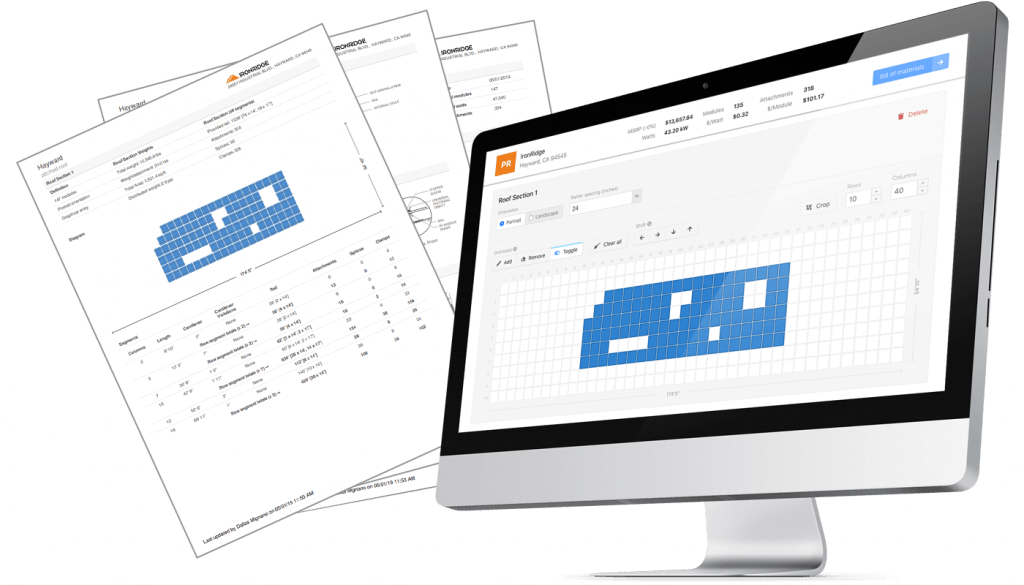
7-16 Certification Letters
XR10® Rail
XR100® Rail
XR1000® Rail
Additional Resources
Design Wind Loads for Solar Modules Mounted Parallel to the Roof of a Low-Rise Building
Wind Loads on Rooftop Photovoltaic Panel Systems Installed Parallel to Roof Planes
ICC Wind Design Manual: Examples for Wind Forces on Buildings and Solar PV Systems
Frequently Asked Questions
When does ASCE 7-16 go into effect?
It depends on your AHJ. Some municipalities like Larimer, Colorado have already begun issuing permits based on ASCE 7-16 code. By the end of 2020, most cities will have moved away from 7-10 standards. To be safe, contact your AHJ about their roll-out timing.
How is IronRidge® supporting installers with ASCE 7-16?
We’ve published sealed certification letters for most solar states, and will be adding new state-specific letters as they transition to ASCE 7-16. Visit the Pitched Roof Documents & Resources page for the most up-to-date links. Additionally, we’ve updated our Design Assistant tools to accommodate the new design considerations and algorithms. You can design a project to ASCE 7-16 standards.
Will this impact just Pitched Roof, or are Flat Roof and Ground Mount arrays going to change?
These changes will impact all rooftop arrays, regardless of the slope. While ASCE 7-16 does provide recommendations regarding soil and seismic issues that impact number and placement of piers in Ground Mount arrays, the changes don’t impact rail spans, about which we provide direction.
Who can I talk to if I have a specific issue?
Our technical support team is standing by to provide guidance as we navigate this change in our industry.

